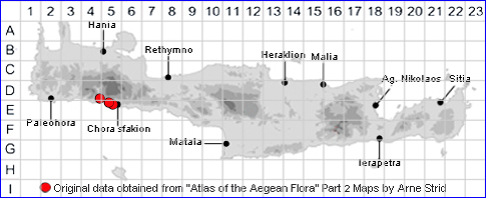
ARUM PURPUREOSPATHUM
Family:- ARACEAE
Common Name:- None
Synonyms:- None
Meaning:- Arum (Gr) A name used by the Greek philosopher Theophrastus.
Purpureospathum (L) With a purple spathe.
General description:- Tuberous perennial.
Leaves:-
1) Lamina:
a) 3-7, 14-22 x 11-17 cm.
b) sagittate-hastate, apex acute to rounded.
c) light to mid-green, glossy.
Flower:-
1) Spathe tube:
a) 5-7 x 1.75-2.5 cm.
b) oblong-cylindric, tapering and constricted towards the end (apically).
c) exterior mid-green longitudinally striped with purple, and stained with purple
above, interior uniformly deep purple.
2) Spathe-limb:
a) 18-23 x 5-9 mm wide.
b) broadly lance-shaped (lanceolate), erect apart from the apical 3-4 cm, which
droops forward, gradually narrowing to a long point (long-acuminate).
c) externally deep green basally, remainder deep purple, shiny, internally mid-
purple or dull to deep bright purple, ± lustrous, rarely somewhat matte.
3) Spadix:
a) 3-5 cm x 2.5-5 mm.
b) 1/3-1/2 as long as the spathe limb.
c) appendix clavate-cylindric, long stipitate, obtuse.
d) black-purpIe.
Fruit:-
1) Berries:
a) 6-11 mm long, 5-6 mm wide.
b) orange red when ripe.
2) Seeds:
a) globose, mid-brown.
Habitat:- In short grass and among large stones, more rarely on almost bare rocky
hillsides or in maquis or garrigue.
Distribution:- Endemic to Crete and Karpathos. On Crete known from only three
sites in the south west. Very rare.
Photo by:- Fotis Samaritakis
Status:-
Conservation status (for threatened species):
Vulnerable (V) according to the Red Data Book of Rare and Threatened Plants of
Greece (1995) -
Vulnerable (V) according to IUCN 1997.
Protection status (for threatened species): Bern Convention.
SPECIES DESCRIPTION
